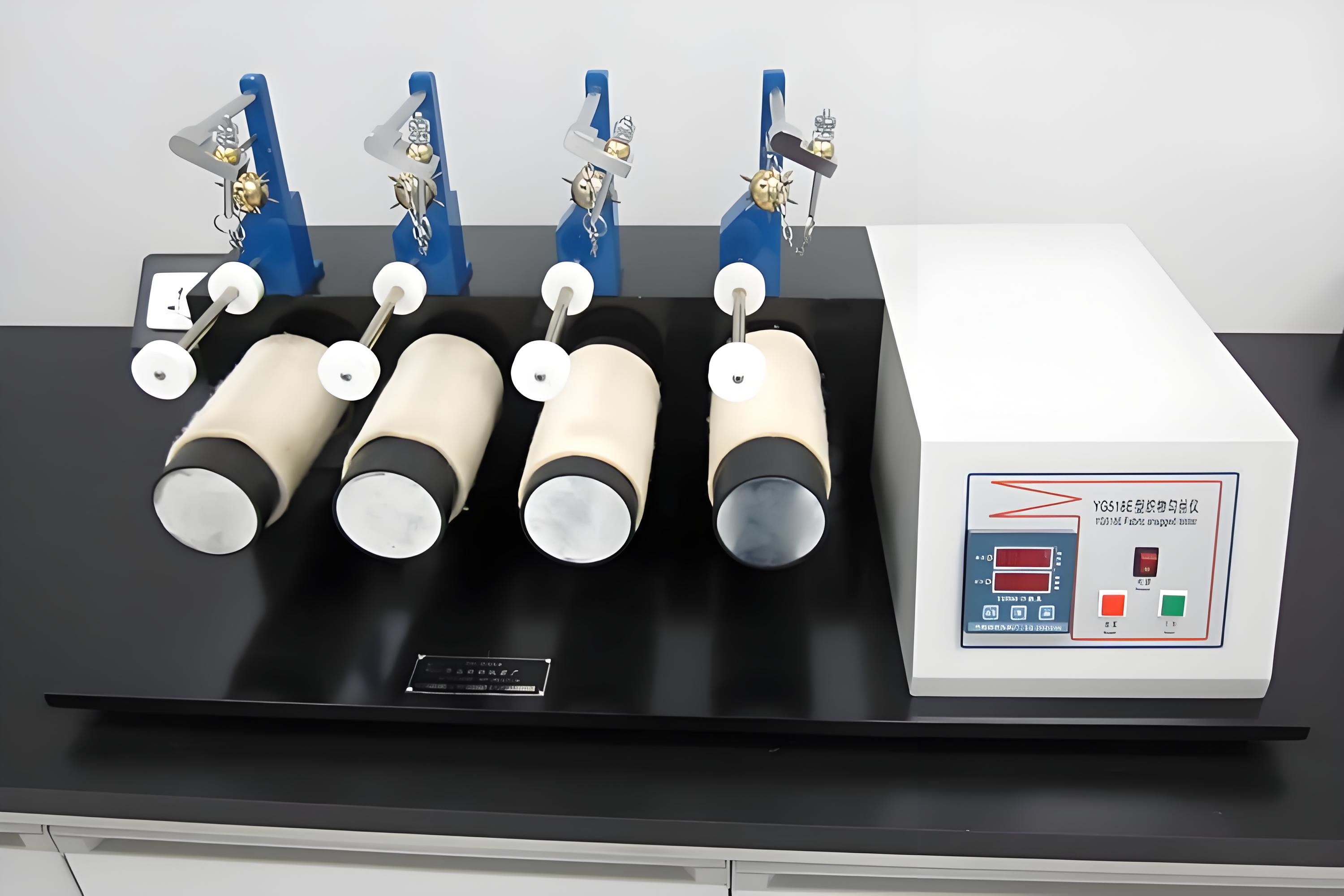Pilling resistance, snag resistance and abrasion resistance of knitted fabrics are key indicators for evaluating their durability and appearance retention.
The specific meanings and differences are as follows:
1. Pilling Resistance
Definition:The ability of a fabric to resist the loosening of fiber ends and the formation of small balls due to friction. Conventional pilling refers to whether the fabric has pilling after grinding for 600 revolutions.
Test standards:
ISO 12945-2:Simulates the friction between human skin and clothing, and evaluates by observing the pilling level (such as 1 to 5, 1 is the worst).
AATCC 135:Use a Martindale friction machine to rub with standard abrasives (such as sandpaper) to quantify the degree of pilling.
Influencing factors: Fiber length (long fibers are less prone to pilling), yarn twist (high twist reduces fiber loosening), and finishing process (such as anti-pilling agent treatment).

1-1 Anti-pilling Test
2. Snag Resistance
Definition:The ability of a fabric to resist being hooked by sharp objects (such as hooks, branches) and pulling out fibers to form thread ends or holes. Conventional snagging is to see if the fabric yarn is picked out after being rubbed by a nail hammer.
Test standard:
ISO 13938-1:Use a metal hook to scratch the fabric at a specific pressure and angle to evaluate the snagging level (such as 1 to 5, 1 is the most serious).
AATCC 22:Simulate the friction scene in actual wearing, observe the snagging area and fiber damage.
Influencing factors: fiber strength and elasticity (high-strength fibers are not easily broken), fabric density (tight structure reduces the risk of snagging), surface treatment (such as smooth coating can reduce snagging).

2-1 Anti-snagging Test
3. Wear resistance
Definition:The ability of a fabric to resist wear and damage after long-term friction or pressure. Conventional wear resistance is whether the fabric is damaged after 10,000 turns of grinding.
Test standard:
ISO 12947-2:Martindale friction test, simulate washing, wearing and other scenes through different abrasives (such as emery cloth, rubber), and measure the amount of wear (such as weight loss or thickness change).
ASTM D4158:Evaluate the durability of fabrics under bending and friction.
Influencing factors:fiber type (nylon and polyester are more wear-resistant than cotton and wool), fabric structure (complex structures such as double-layer and jacquard are more wear-resistant), seam technology (reinforced seams reduce wear points).

3-1 Wear Test
Table of differences among the three
| Characteristics | Anti-pilling | Anti-snagging | Abrasion resistance |
| Failure form | Fiber ends loosen to form small balls | Fibers are hooked to form thread heads/holes | Fiber breakage, fabric damage |
| Testing tools | Friction plate/sandpaper | Hook hook | Martindale friction machine |
| Key scenarios | Repeated friction during daily wear | Contact with sharp objects | Long-term use or high-intensity exercise |
| Improvement direction | Fiber length, twist, anti-pilling agent | Fiber strength, surface smoothness | Fiber type, weaving density |
Summary
Anti-pilling & anti-snagging:both target fiber damage, but pilling focuses on "loose small balls" and snagging focuses on "fibers being pulled out".
Wear resistance:a broader measure of overall durability, covering structural damage and functional failure.
Application scenarios:sportswear needs to take into account both wear resistance and anti-snagging; home textiles pay more attention to anti-pilling; workwear requires high strength and wear resistance.


